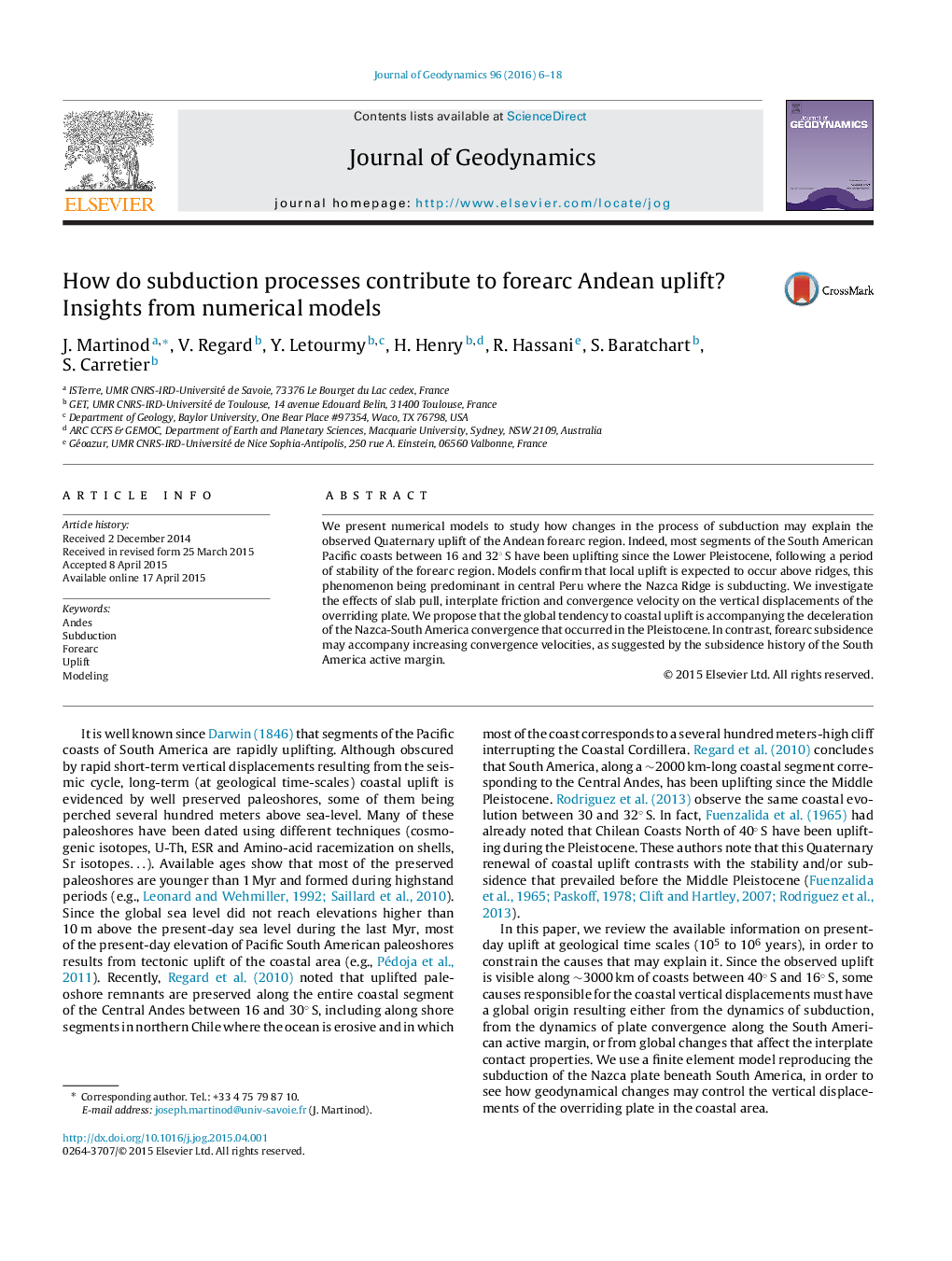| Article ID | Journal | Published Year | Pages | File Type |
|---|---|---|---|---|
| 4687956 | Journal of Geodynamics | 2016 | 13 Pages |
We present numerical models to study how changes in the process of subduction may explain the observed Quaternary uplift of the Andean forearc region. Indeed, most segments of the South American Pacific coasts between 16 and 32° S have been uplifting since the Lower Pleistocene, following a period of stability of the forearc region. Models confirm that local uplift is expected to occur above ridges, this phenomenon being predominant in central Peru where the Nazca Ridge is subducting. We investigate the effects of slab pull, interplate friction and convergence velocity on the vertical displacements of the overriding plate. We propose that the global tendency to coastal uplift is accompanying the deceleration of the Nazca-South America convergence that occurred in the Pleistocene. In contrast, forearc subsidence may accompany increasing convergence velocities, as suggested by the subsidence history of the South America active margin.
